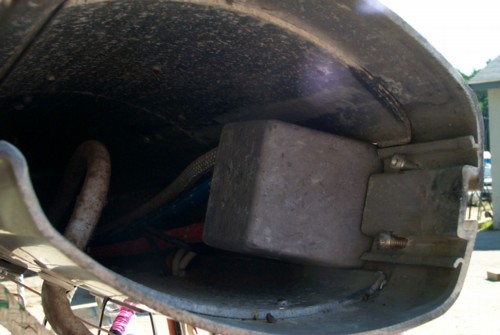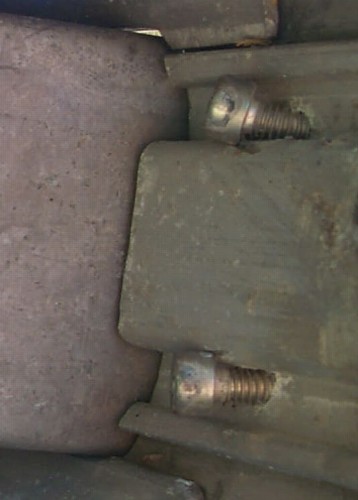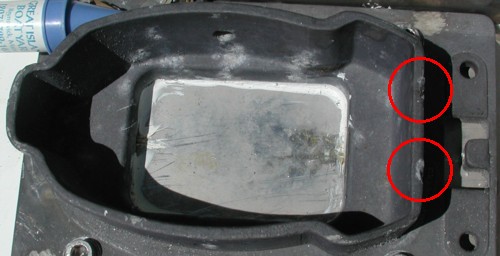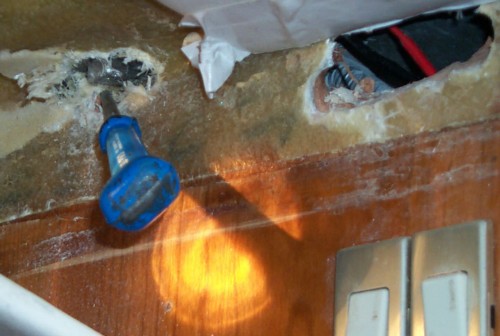Mast-Base Blunders

 We were quite surprised that something as simple as the stoppers for the halyards could installed so badly as to nearly break them.
We were quite surprised that something as simple as the stoppers for the halyards could installed so badly as to nearly break them.
In the picture above, we're peering into the bottom of the mast. The gray box is where the halyards exit the mast. Four Allen-bolts held the box on the inside, while nuts held it on the outside. Evidently, Prout had installed the bolts too low, and as the mast was slipped over the mast base, they luckily bent out of the way (see detail in left picture).
Naturally, these stainless bolts had not been installed with any kind of anti-corrosive coating - though we should have been grateful that Prout elected to use at least stainless materials. With time and the salty air, the Aluminum of the mast began to oxidize around the bolts. With patience and skill we extracted them nonetheless and then substituted something more sensible.
Our Phillips-head bolts screw in from the outside. They are short enough to ensure that they will not damage the mast step the way the previous bolts did.

The Mast slips over the mast base bolted into the roof of the boat, so one does not see much of the base when the mast is in place. Thus, until we pulled the mast, we did not realize that the Allen-bolts that Prout had installed were much too long and had been nearly sheared upon installation. The red circles indicate where the Aluminum of the mast bas had been damaged by the impact with the allen bolts.

Getting to the bolts that hold the base to the roof of the catamaran was an adventure in itself. As with the deck cleats, the retaining nuts had been glassed into the boat. Note the crude cutouts to the right that Prout later covered up with their headliner. The location could not be worse, as this is where the bulkhead meets the mast above. Thus, the structure is much weaker than it had to be.
Best Estimate of Time Required:
| Extract Allen-bolts & replace with phillips screws | 3 hours |
|---|---|
| Fix saloon connections | 3 hours |
| Total | 6 hours |
|---|


